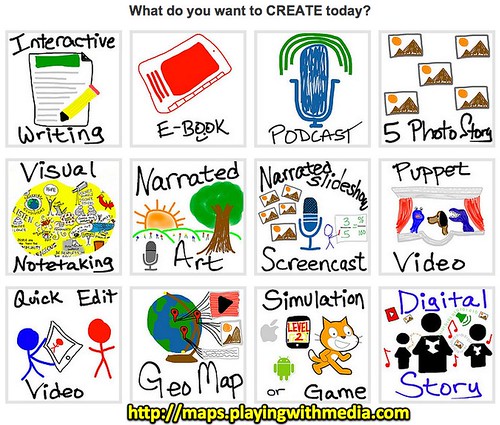These are exciting times to be in the classroom. Technology continues to flood into schools. Students are coming to school with devices, some even bring more than one. Now is the time to make learning more engaging and practical.

I am fortunate enough to teach in a computer lab. I have built my lessons up to the point where I now have a paperless classroom. The passion of incorporating technology into my teaching is what pushed me into the EdTech Program in the first place. I wanted to learn more. Now my eyes have been opened to just how much more you can do with technology.
In this class I have learned more ways to add collaboration into assignments. Students don't even have to be near each other. I have added a little collaboration into some of my lessons, but I have now seen just how far you can take it. Shortly, in the future, people could literally be hired and work from anywhere with collaboration. I am teaching my students these skills and want to stress them more so they look more viable to employers. This is their future. If I can give them some life skills, they will be more successful.
My favorite assignments involved working with my group. They were awesome. David lives in Idaho and Jody is on the East Coast. Although our time zones were all different, we were still able to pull it together and create our group work. We used Google Docs to collaborate our ideas. They have both been incredible and I think our final mini unit came out pretty good. My group carried me through this semester. I had a tragic loss at the end of October and David took the initiative to check in on me. He would email both Jody and I with important dates, answer my questions when I felt lost, and help me refocus. Truly incredible. I would not have pulled through this class if it hadn't been for them. Another thing I learned this semester was how to incorporate more student evaluation. I think if students know other students will be evaluating their projects then they might step up a level to make themselves look better.
Another thing I am appreciative of this semester is our instructor, Jackie. She gives a mountain load of work, but she has so many resources and she seems so knowledgeable about this topic. I can feel her passion in every assignment. They are thought out, extensive, and very thorough. We were given examples and tons of additional information to help us through each one.
I have started a class Facebook page and a class Twitter account. I am going to try and design next semester around using these tools extensively with my students. My goal is to incorporate many collaborative activities using these tools. I am a Google Apps school, so I have that one down, but I need to branch out to other web based tools like Scoop It and I'll look into Storify. Anything to get my student engagement up and to give them skills they will need beyond high school.
As for my performance on this blog I am proud of my post on Creating a Positive Digital Plan, my PLE Diagram, Twitter for Professional Development, and this one. A few of the other could have used a bit more effort. Time is always the issue here. It doesn't compare to someone like David or Sarah, but I still think it deserves at least a 70/75. I need the points.
Thank you for a great semester, as always, I wish I had more time. And a big thank you to Jody and David for getting me through this.
One of my favorite social media videos. I love the music. The students and I have a whole conversation about the song and this composer and what he originally created it for. It is a great opener.





